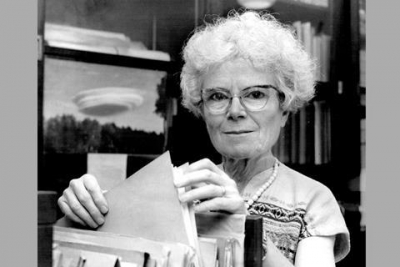
Kathleen Lonsdale was an Irish crystallographer and a pioneer in the use of X-rays to study crystals. Using X-ray diffraction, she proved that the benzene ring is flat.
Kathleen Lonsdale was born in 1903 in Newbridge, County Kildare, Ireland. She studied at Woodford County High School for Girls. She excelled in mathematics and science. However, she had to attend classes in physics, chemistry and mathematics at the boys’ high school because the girls school didn’t offer these subjects. She earned her Bachelor of Science degree from Bedford College for Women in 1922, graduating in physics with an M.Sc. from University College London in 1924. In 1924, she joined the crystallography research team headed by William Henry Bragg at the Royal Institution. Bragg was a pioneer of X-ray diffraction. After her marriage, she moved to the University of Leeds Department of Physics, where she continued to work on X-ray diffraction and studied the structure of benzene. In 1929, her results showed that the benzene ring was flat, something that chemists had been arguing about for 60 years. She developed an X-ray technique to obtain the accurate measurement (to seven figures) of the distance between carbon atoms in diamond. She also applied crystallographic techniques to medical problems.
She became professor of chemistry at University College, London, in 1949. In 1956, she was made Dame of the British Empire
During her career she attained several firsts for female scientists, including being one of the first two women elected a Fellow of the Royal Society (FRS) in 1945 (along with bacterial chemist Marjory Stephenson), first woman tenured professor at University College London, first woman president of the International Union of Crystallography, and first woman president of the British Association for the Advancement of Science.
Picture Credit : Google



